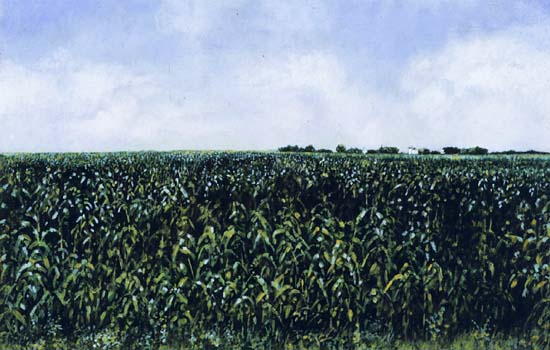
Photograph by David Winters
Colp, IL
Illinois State Museum collection
Agriculture in Illinois Today
Life on the American farm has traditionally been a family endeavour. Children play with farm toys, perform farm chores, and raise animals and garden crops as they learn how to farm. Both spouses participate in farming, sometimes with gender-specific tasks. The farm is a business in which everyone in the family is involved. It transfers to the new generation as the older generation retires.
Mechanization on the farm began in the nineteenth century, although horsepower was still very much in use through the 1920s. Farmers who modernized were able to grow more crops with fewer man hours expended, or to achieve greater yield and farm more acreage with the same number of man hours.
Farming changed with the increased mechanization. Machines require a large investment. They can complete the sowing or harvesting processes more quickly, but they are also more sensitive to weather conditions and more expensive to repair that the older machines. Another investment decision is how much fertilizer, herbicides, and pesticides to use each year, a decision that can affect yields. There are options of no-till versus shallow or deep plowing, which affect the economics and environmental management of farming.
Technology and computers have increased in use in agriculture over the past twenty years. Computers are used not only for bookkeeping and record-keeping, but to plan crops, monitor rainfall, soil status, and yield. Financing of the farm entails government subsidies, loans, and insurance. Family members often must take off-the-farm jobs to supplement the farm income.

Harold Gregor
Illinois State Museum collection
Modern commercial farming differs greatly from the traditional subsistence farming of the history books. Agriculture may have grown over the last one hundred years, but farmers still farm because they hold the land dear to themselves and as a legacy to their families.







